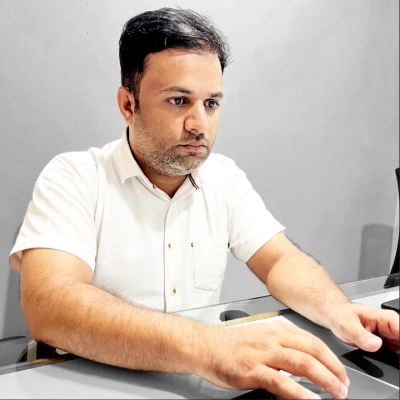4 Creative XR Applications That Generated Substantial ROI
Extended reality (XR) applications are revolutionizing business operations with measurable returns on investment, as demonstrated by these four successful case studies. Industry experts reveal how companies have transformed training, sales presentations, property viewings, and field inspections using innovative XR solutions. The results showcase significant improvements in efficiency, conversion rates, and cost savings that organizations across various sectors can implement today.
Immersive Training Platform Delivers Rapid ROI
It was the most exciting journey of the XR project that began as a casual experience. But later, it became the leadership star of every presentation. We built an immersive training platform replicating high-risk, high-cost real-world scenarios that previously demanded shutting down operations and draining budgets. The real innovation wasn't just adding VR headsets. It was weaving in real-time performance data, behavioural analytics, and adaptive learning, so each session grew smarter and more cost-effective.
It resulted in reduced training time and error rates. As the system actually paid for itself within a single quarter. And proving this ROI, a spreadsheet wasn't enough. Like the tracking list involved, cost avoidance, productivity gains, and retention improvements. And later got compared to pre-XR baselines. When presenting results, I told the story not as "we built cool tech," but as "we saved serious money, boosted safety, and made every manager's life easier." That's when innovation became impact.

XR Showroom Doubles Enterprise Client Conversions
One of the most creative XR applications I implemented was developing immersive product demo environments for prospective clients at AIScreen. Instead of relying on static presentations, I built an XR showroom where users could virtually experience our digital signage in different settings—retail stores, corporate offices, hospitals—adjusting content in real time to visualize the ROI potential of dynamic communication.
The results were immediate. Sales cycles shortened by 35%, and conversion rates for enterprise clients nearly doubled. I measured ROI by tracking demo-to-deal ratios, engagement time within the XR environment, and post-demo follow-up responses. The data showed that clients who interacted with the XR experience retained 60% more product information than those who saw traditional demos.
To communicate this success to stakeholders, I presented a side-by-side metrics dashboard showing performance gains and qualitative feedback. The takeaway was clear: XR didn't just enhance storytelling—it redefined how I sold value through experience.

Simple AR Home Tours Boost Qualified Leads
I ran an XR campaign for a home developer that boosted qualified inquiries by about 35% in six weeks. The idea was simple. We used an AR walkthrough that let people explore a model home on their phone before booking a tour. They didn't need any special hardware or an app, just a link in the ad and their camera. So more people tried it out because it was easy to use. It also made them feel more ready since they already knew what to expect.
I tracked ROI through CRM data and Google Ads conversions. I matched new bookings and contact forms with those who used the AR view. The results showed lower customer acquisition costs and fewer no-shows compared to standard image ads. When I shared the findings with stakeholders, I explained that XR worked as more than just a visual tool. It actually helped qualify leads early in the funnel. So it sped up sales readiness and paid for itself within two months.
- Josiah Roche
Fractional CMO, JRR Marketing
https://josiahroche.co/
https://www.linkedin.com/in/josiahroche

AR Overlay Cuts Storm Inspection Times
Choosing the right technology application isn't about using the newest tool; it's about eliminating the costly uncertainty of communication. Our most impactful creative application of eXtended Reality (XR) wasn't a virtual tour; it was developing a hands-on AR overlay for post-storm inspections.
The conflict arose because after a major hailstorm, the paper process led to structural failures in documentation. Homeowners were anxious, and adjusters mistrusted our hand-drawn diagrams, leading to endless clarifying calls and re-inspections. We were wasting time trying to prove our measurements rather than fixing the damage.
Our simple, hands-on solution was equipping inspectors with tablets running an Augmented Reality application. The application overlaid a precise, measured 3D grid onto the live roof feed, allowing inspectors to digitally tag every impact and structural flaw directly onto the virtual overlay. This instantly created an undeniable digital twin of the damage.
This method produced substantial ROI by generating structural certainty. We measured success by the average claim cycle time, which dropped from 65 days to under 38 days because the digital evidence was irrefutable. This reduction increased our capacity by over 40% during peak season. We proved this success to stakeholders with three simple metrics: a 15% reduction in inspection labor costs, an 8% drop in claim denial rate, and the quantifiable 40% increase in job capacity.
The best way to generate substantial ROI from technology is to be a person who is committed to a simple, hands-on solution that removes uncertainty and maintains the integrity of the data source.


